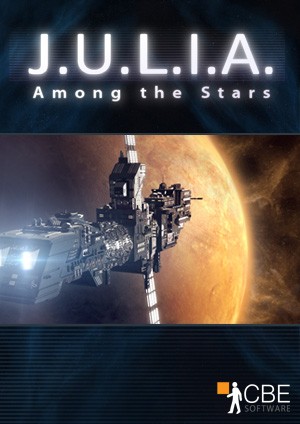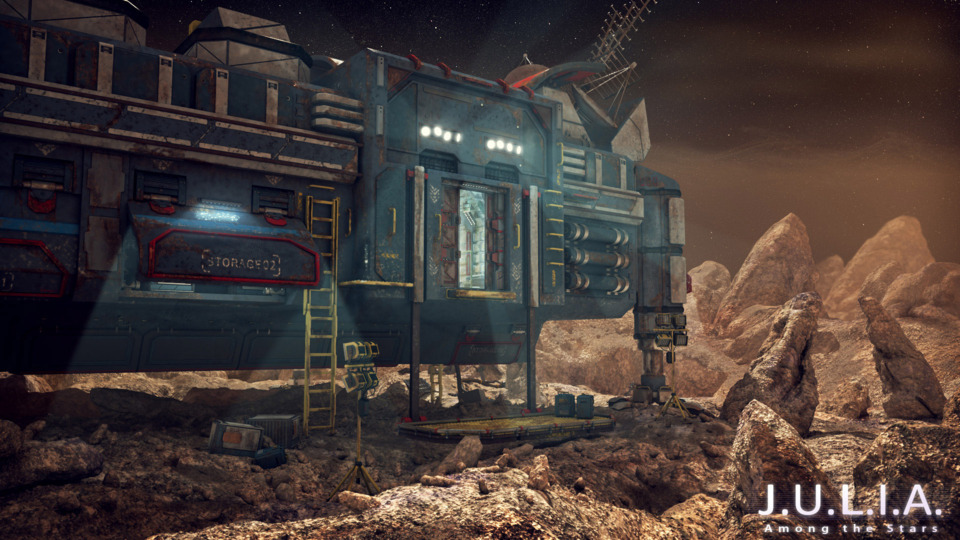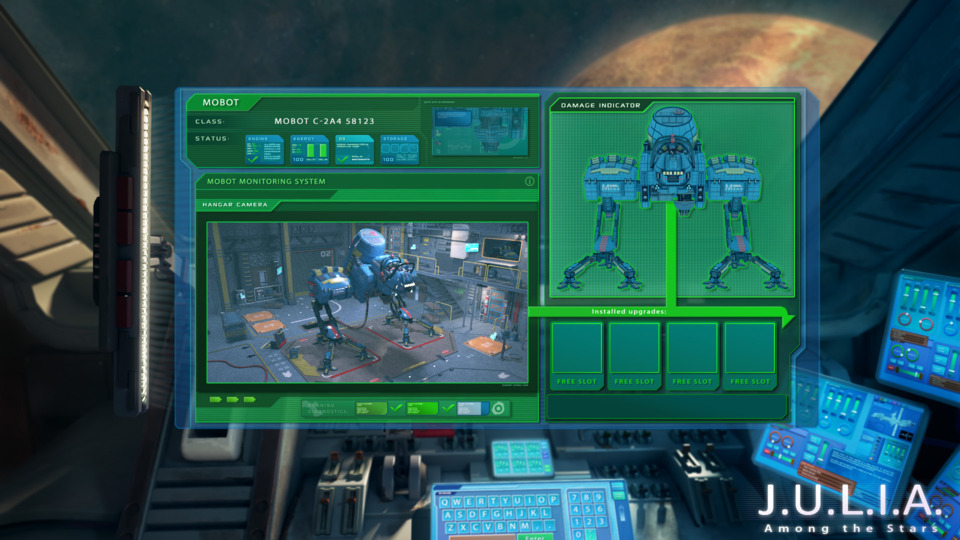
Like many nerds, my preferred direction when it comes to stories of the space opera genre tends towards the scientific. I've been watching the new season of The Expanse this past month, and between flights of fancy about glowy blue alien shit the show is often pretty grounded in the realities of space travel and the high-level academic terminology involved. Perihelions, albedos, Lagrange points; gimme all of it, even if it means a quick trip to Wikipedia for a refresher on what any of it means.
J.U.L.I.A.: Among the Stars isn't quite that space jargon-heavy, but still does its darndest to present an interstellar mystery framed by an interest in astrobiology and scientific discovery. Awaking on a probe ship in a distant star system by its obstinate AI (and titular acronym) J.U.L.I.A., civilian scientist Rachel Manners is first put to task fixing the ship after a meteor storm and then given the job of figuring out what happened to the rest of her expedition. Initially, she is limited to just the one planet - Xenophon, a barren world filled with lethal radiation that nonetheless has a research base - before procuring the means to explore the rest of the system. Neither Rachel or J.U.L.I.A. can leave the probe; rather, they explore through the viewfinder of the reliable MOBOT, an exploration mech, and installing upgrades to MOBOT is how the player expands the number of locations they are able to reach.
Right off the bat, the game feels similar to something like Legend Entertainment's Mission Critical: you're alone, there's vital maintenance to be done on the ship to ensure your long-term survival, and then you're left to your own devices puzzling out how to proceed without a ship's crew that eventually escalates to digging into the enigmas surrounding this alien star system. Rachel, though a little irritable due to being in this unfortunate scenario, is nothing if not a scientist at heart; many times MOBOT will be asked to take samples for analysis, and these analysis sessions often don't reveal much about the central plot but will provide insight into alien ecosystems and other phenomena. You'll also be taking tissue samples from dead crewmembers and piecing together what happened to them, and the way the game has you bouncing from one planet to the next with new upgrades is a compelling way of dripfeeding disparate but connected unlucky scenarios related to the doomed expedition. For instance, the desert world of Phaidros had a massive and destructive creature that blindsided the research team there like some eerie spin on Tremors, while the jungle planet of Ambrosia puts you face to face with a sapient alien race; one that is naturally cautious around visitors, given the last newcomers - which resembled humans with laser guns from their description - were unexpectedly hostile.

In most respects, J.U.L.I.A. is a fairly standard modern adventure game. As well as a handful of inventory puzzles common to the genre, there's a number of unique and recurring instance puzzles which I generally call "Layton-esque". The most prominent are the upgrades to MOBOT, each of which requires an electronics puzzle similar to Pipe Dream. You're given a blueprint of the way various nodes connect, but due to onboard shortages are given way fewer connectors to hook them all together - the puzzle, therefore, is figuring out how to make the same basic model in a far more economical way. Other puzzles might involve translating an alien language, exploring a maze-like jungle, figuring out everyone's datapad passwords by reading their emails and poking through their personal effects, or restoring J.U.L.I.A.'s lost memories by recreating images in a sliding block like fashion. None of these are particularly difficult, and each one has a guide on how the puzzle UI works without spoiling any part of the solution: something I appreciate far more than a hint system. The hardest puzzle involved an alien jellyfish that I won't get into here, only to say it was one of the few times that the game got genuinely eerie.
I think what I appreciate most about J.U.L.I.A.: Among the Stars, which is by most metrics pretty standard, is that it frequently allowed me to indulge my would-be space explorer side, similar to scanning and exploring non-plot-related planets in the Mass Effect universe. Learning more about the planets by taking samples of local flora, fauna, and minerals helps flesh out the setting, and the game's graphics - at least for the vistas and mechanical elements like MOBOT and the probe ship - are sharp and impressive. (The game was originally meant to be a HD remaster of the original J.U.L.I.A., but its wild success on Indiegogo meant the developers could pour a little more money into its presentation and it shows.) If it has flaws it's in the writing and voice-acting; the former really emphasizes that the human expedition were a pack of idiots, which is in some way supported by the plot given that this was a privately-financed expedition undermined by unscrupulous leadership and some real "lowest bidder" machines and supplies, while the latter I imagine is due to non-native English speakers (developer CBE Software is based in Czechia) directing English actors and not stepping in whenever the intonation or delivery of a line wasn't quite right. Despite being a scientist on a research mission, Rachel would frequently lose interest in anything she was investigating, and she and J.U.L.I.A. frequently snap at each other and at poor MOBOT in ways that I think were meant to come off as humorous but often came off as petulant, in a manner perhaps unbecoming of a genius astrobiologist and a supergenius AI. Given a well-behaved alternative may have made the game's script far too dry, however, I can understand the need to inject some levity by way of some occasional sarcastic sniping.

On the whole, it's a measured and thoughtful adventure game that lets you get deep into the weeds - literally, since the protagonist is a biologist - as often as you like. There's even an optional "Mind-O-Matic" mode that lets you mentally recount what happened by way of a madlibs flowchart, in case you wanted to take a moment to get everything straight. I went about the game with a very subdued sense of excitement, ready to dig into each new mystery as it presented itself across the game's six planets, eager to find out what happened to the poor idiots on this trip and to learn more about this world that CBE created. The game does eventually go in some predictable directions, and like any true FMV (even if it's the pre-rendered kind, rather than the "slumming Hollywood actors on greenscreens" kind) the end puzzles are as bizarre as they are annoyingly based on trial-and-error, though the ones preceding them were engaging and fun to solve. If you're a fan of science-fiction, or more leisurely graphic adventure games of that genre like Mission Critical or LucasArts's The Dig, I'd recommend giving it a shot.
Rating: 4 out of 5.
| < Back to 202: Operencia: The Stolen Sun | The First 100 | The Second 100 | > Forward to 204: Gris |

Log in to comment